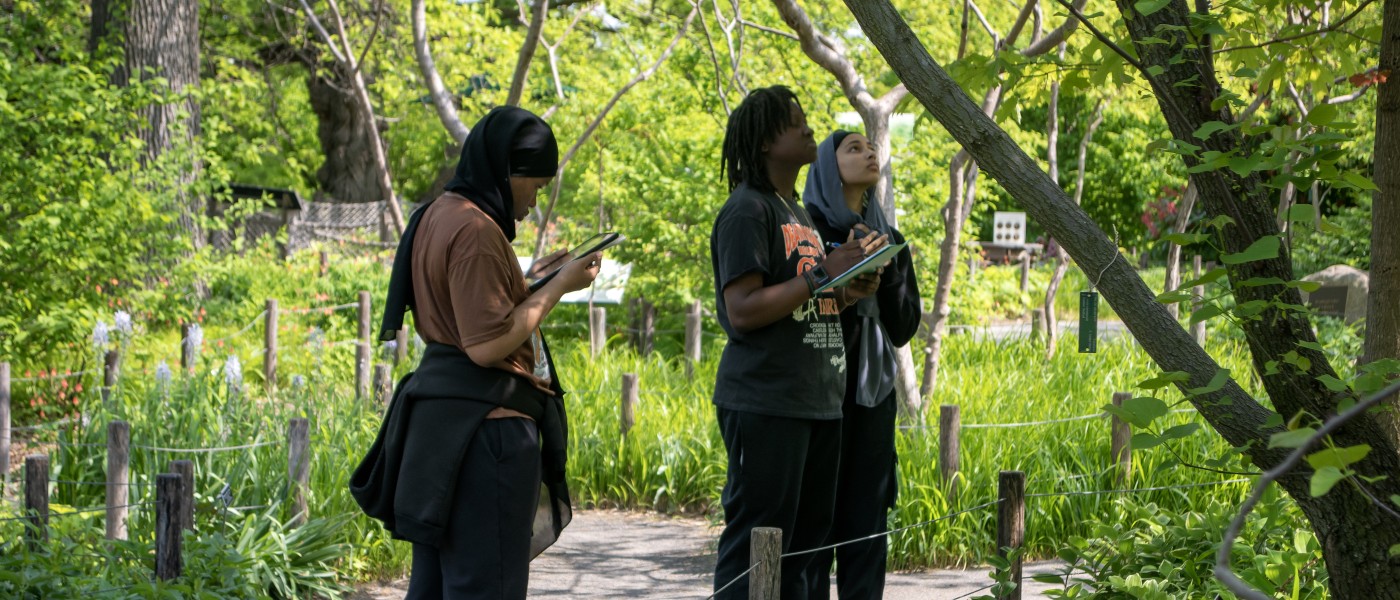Studying Nature’s Calendar with BASE
Are you wondering whether your roses bloomed earlier than usual this year, or when to expect trees to change color in the fall? Those are phenology questions.
Phenology—or “nature’s calendar,” as the National Phenology Network puts it—is the study of the timing of cyclical biological events and how they are influenced by weather and climate. This past spring, students from the Brooklyn Academy of Science and the Environment (BASE), Brooklyn Botanic Garden’s partner high school, completed a unit in phenology, recording seasonal changes they observed in trees.
By spending time each week observing the emergence of buds, leaves, flowers, and fruit, students developed some of the foundational science skills that accompany inquiry-based field work. They also contributed to the public’s understanding of the impacts of climate change: Their observations are entered into a database with the National Phenology Network, which can be used by scientists and the public to track the impacts of climate change.
Phenology “wakes people up to global warming,” one student reflected after the unit concluded.
BASE is a public New York City high school with a focus on environmental education that operates in partnership with Brooklyn Botanic Garden. The phenology unit is part of our Urban Ecology Field Studies course, a hands-on class taken by all freshmen that’s led by BBG instructors. Taught on the Garden grounds and in Prospect Park, the course allows students to follow their curiosity and learn to ask questions while immersed in the outdoors.
We developed the phenology unit last year to highlight the experience of witnessing seasonal cycles. Our study of these cyclical changes is embedded in broader lessons on climate change: how it’s impacting ecosystems, where plant and animal life cycles are deeply connected, and how we can take action through environmental stewardship.

During the unit, students spend time in the field really getting to know their trees and serving as citizen scientists within our local community. They created journal entries for their trees each week, where they made observations and posed “wonders” or questions. By observing phenophases, or life cycle events, students were able to ‘see’ spring happening in real time all around us—and deepen their relationship to the outdoors.
“I saw new plants that I had never looked at before,” one student recalled. “It was very relaxing and calming to observe my tree,” another student noted. As a third student put it: “It was nurturing going out to see nature.”


